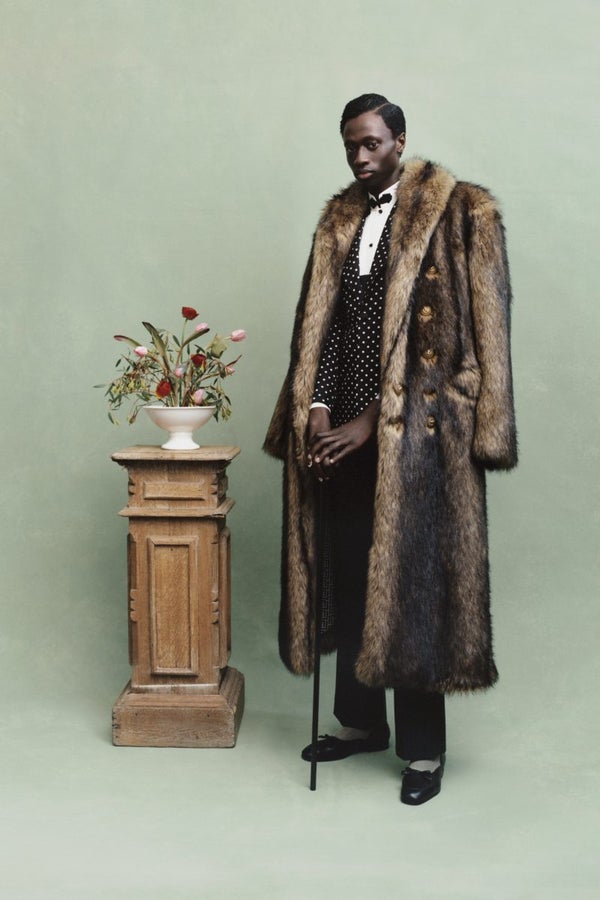By: Sahra Mohamed
This year’s Met Gala theme, Superfine: Tailoring Black Style, isn’t just another red carpet event, it’s a historical and cultural exploration of centuries of Black excellence, resistance, and reinvention through fashion. The exhibit is inspired by Dr. Monica L. Miller and her book Slaves to Fashion: Black Dandyism and the Styling of Black Diasporic Identity. Miller traces the rise of the Black dandy, a figure who used clothing not just for style, but as a form of defiance, expressing self-ownership, dignity, and a new sense of identity in the face of oppression. Miller’s work looks at how Black men in 18th-century England began to embrace dandyism. Enslaved and formerly enslaved people like Julius Soubise, an Afro-Caribbean man known for his flashy style, started wearing the fancy clothes of European elites. At first, white elites dressed them this way to show off their own wealth and power but over time, these men took control of the look. They added their own flair and personality, turning the style into a powerful way to express independence and pride.
“Black dandyism,” Miller explains, “is a strategy and a tool to rethink identity, to reimagine the self in a different context. To really push a boundary, especially during the time of enslavement, to really push a boundary on who and what counts as human, even.” That radical reimagining is at the essence of the 2025 Met exhibition, which Miller is co-curating alongside Andrew Bolton of the Costume Institute. The show, according to Vogue, will explore how Black communities have used style to express identity, resistance, and creativity over the past 300 years, from the era of the transatlantic slave trade to today’s global fashion scene.
“Cosmopolitanism” and “Beauty” are two of the twelve traits that influence the exhibit, inspired by Zora Neale Hurston’s 1934 essay “The Characteristics of Negro Expression.” This lens lets the show look beyond just the clothes, showing how style speaks to wit, resistance, joy, and culture. The first section, “Ownership,” opens with the personal belongings of an enslaved person from 19th-century Maryland, connecting the exhibit to lived experiences. From there, it moves forward through time, featuring work from icons like Virgil Abloh and Pharrell Williams, both of whom expanded the possibilities of fashion by blending streetwear, music, and art into high fashion. Through their vision, fashion became more than clothing, it became a platform for cultural expression, identity, and visibility.
Important figures like André Leon Talley and Dapper Dan are part of this powerful fashion history. Talley, the former editor and creative director at Vogue, made a big impact with his striking style and extensive fashion knowledge. He often wore dramatic capes and colorful caftans, not just for looks, but to make a statement. By showing up in spaces that were mostly white, he stood out as a modern dandy, challenging the rules while staying true to his unique style. Meanwhile, Dapper Dan emerged from the streets of Harlem in the 1980s, transforming luxury fashion through his own lens. After being left out of the fashion industry, he built his own atelier and began designing custom pieces for hip-hop artists and Black celebrities, repurposing Gucci and Louis Vuitton logos in unique and customizable ways. Long before luxury brands understood the power of hip-hop, Dapper Dan was combining those worlds, dressing the likes of LL Cool J and Salt-N-Pepa in custom gear that redefined status. After years of tension with the industry, Dapper Dan was eventually embraced and now collaborates officially with the very brands that once threatened legal action against him. His story is the essence of Black dandyism, resistance, and cultural ownership.
The choice of co-chairs for the 2025 Met Gala reflects Black dandyism in modern times. Colman Domingo, Lewis Hamilton, A$AP Rocky, Pharrell Williams, and honorary chair LeBron James represent distinct aesthetics, whether it’s Domingo’s polished elegance, Hamilton’s luxury edge, or Rocky’s experimental risks. Their collective presence, alongside Anna Wintour showcases how fashion institutions are beginning to reckon with race, history, and the people they’ve long marginalized. The 2025 Met Gala will also have a host committee made up of André 3000, Chimamanda Ngozi Adichie, Jordan Casteel, Dapper Dan, Doechii, Ayo Edebiri, Edward Enninful, Jeremy O. Harris, Branden Jacobs-Jenkins, Rashid Johnson, Spike Lee and Tonya Lewis Lee, Audra McDonald, Janelle Monáe, Jeremy Pope, Angel Reese, Sha’Carri Richardson, Tyla, Usher, and Kara Walker.
Still, the question remains: Can a space like the Met, with its own troubled history around race and representation, do justice to a tradition as beautiful and dynamic as Black style? The fashion industry still has a long road ahead when it comes to truly centering Black voices, beyond themed events and token gestures, especially as recent leadership changes at major fashion houses continue to favor European men. This year’s Met Gala could offer something different by celebrating the everyday brilliance of Black style and emphasizing the power of dressing with purpose. In a world that has often policed Black bodies, Black dandyism offers a blueprint for imagining otherwise. As Slaves to Fashion shows, the stakes of style go far beyond the surface. Whether through a scarlet frock coat in the 1700s or a crystal-studded cape on the Met Gala steps, to dress with intention is to declare: I am here, I belong, and I will be seen.

Tyler Mitchell 2025


Leave a Reply